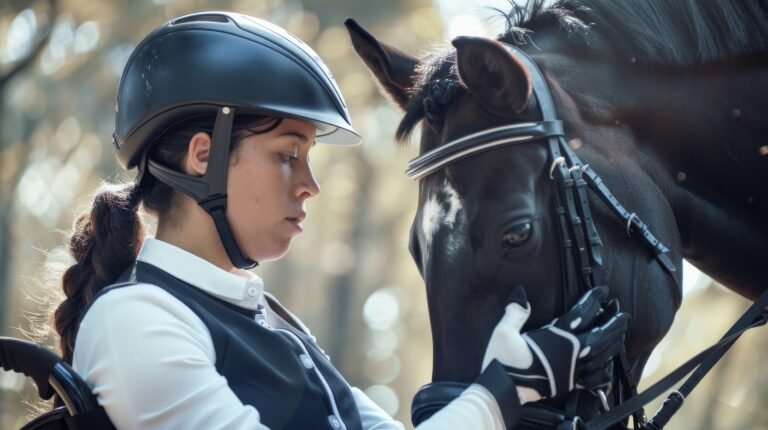When it comes to equestrian safety, few items are as essential as a well-fitting helmet. For riders of all levels, choosing between traditional riding hats and skull caps can be a significant decision, especially when factoring in safety, style, comfort, and intended riding discipline. While both options are designed to protect the rider’s head, they offer distinct features that make them suitable for different uses. In this article, we’ll explore the strengths and drawbacks of each to help you make an informed decision.
Traditional Riding Hats: The Classic Choice
Traditional riding hats have long been associated with the more formal aspects of equestrianism, such as dressage, show jumping, and eventing. These helmets typically feature a fixed peak and are often designed with aesthetics in mind. Many models include velvet coverings and are tailored to complement show attire.
Pros of Traditional Riding Hats:
- Aesthetic Appeal: Their elegant design makes them ideal for competitions and shows where presentation is important.
- Sun Protection: The fixed peak provides shade for the eyes, offering some relief during sunny conditions.
- Comfort and Fit: Modern riding hats often incorporate advanced ventilation and padding, ensuring a snug yet comfortable fit.
Cons of Traditional Riding Hats:
- Limited Versatility: These hats are less suitable for high-risk disciplines like cross-country or racing.
- Potential Hazards: The fixed peak, while useful for sun protection, can pose a risk in the event of a fall by digging into the ground.
Also Read: Does Wearing a Hat Cause Hair Loss?
Skull Caps: Built for Safety and Performance
Skull caps are the helmet of choice for riders participating in high-impact disciplines such as eventing, racing, and hunting. Unlike traditional hats, skull caps feature a round, peakless design and are typically worn with a silk cover for customization.
Pros of Skull Caps:
- Enhanced Safety: The lack of a peak reduces the chance of neck injury upon impact. The rounded shape offers consistent coverage around the head.
- Discipline-Specific: Favoured in eventing and racing for their protective features and compatibility with body protectors.
- Regulation Compliance: Often meet higher safety standards, which is a requirement in many competitive sports.
Cons of Skull Caps:
- Less Formal Appearance: They may not be suitable for more traditional disciplines or competitive settings focused on presentation.
- Less Sun Protection: Without a peak, riders may need additional gear to shield their eyes from sunlight.
Choosing the Right Helmet for Your Riding Style
The ideal helmet ultimately depends on the rider’s chosen discipline and personal preferences. For example:
- Dressage or Show Jumping: A traditional riding hat enhances the overall look and is widely accepted in these arenas.
- Eventing or Cross-Country: A skull cap is often mandatory due to its safety benefits.
- Recreational Riding: Riders might opt for either, depending on their priorities for comfort, safety, and appearance.
Safety Standards and Certification
Regardless of your choice, always ensure the helmet adheres to the latest safety standards. Certifications such as PAS 015, ASTM F1163, and VG1 indicate that a helmet has undergone rigorous testing. Regularly check your helmet for signs of wear and replace it after any significant impact, even if no damage is visible.
Which Is Better?
There’s no one-size-fits-all answer. Traditional riding hats offer classic style and sun protection, making them a preferred option for competitive show riders. Meanwhile, skull caps provide superior safety features for high-risk riding disciplines.
If safety is your top priority, especially in more intense equestrian activities, then skull caps are the smarter choice. Ayr Equestrian offers a range of horse riding skull caps tailored for riders seeking top-tier protection without compromising on comfort.
Whichever you choose, investing in a certified, well-fitted helmet is the best decision any rider can make.
Thanks For Visiting Our Blog
For more insight, Keep Visiting Valley News Magazine
Explore Our More Blogs
How to Get Rid of Carpenter Bees Without Killing Them



